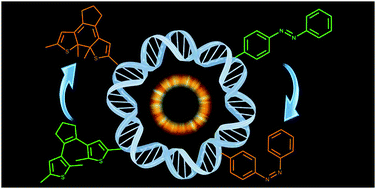Recent developments in reversible photoregulation of oligonucleotide structure and function
Abstract
There is a growing interest in the photoregulation of biological functions, due to the high level of spatiotemporal precision achievable with light. Additionally, light is non-invasive and waste-free. In particular, the photoregulation of oligonucleotide structure and function is a rapidly developing study field with relevance to biological, physical and material sciences. Molecular photoswitches have been incorporated in oligonucleotides for 20 years, and the field has currently grown beyond fundamental studies on photochemistry of the switches and DNA duplex stability, and is moving towards applications in chemical biology, nanotechnology and material science. Moreover, the currently emerging field of photopharmacology indicates the relevance of photocontrol in future medicine. In recent years, a large number of publications has appeared on photoregulation of DNA and RNA structure and function. New strategies are evaluated and novel, exciting applications are shown. In this comprehensive review, the key strategies for photoswitch inclusion in oligonucleotides are presented and illustrated with recent examples. Additionally the applications that have emerged in recent years are discussed, including gene regulation, drug delivery and materials design. Finally, we identify the challenges that the field currently faces and look forward to future applications.



 Please wait while we load your content...
Please wait while we load your content...